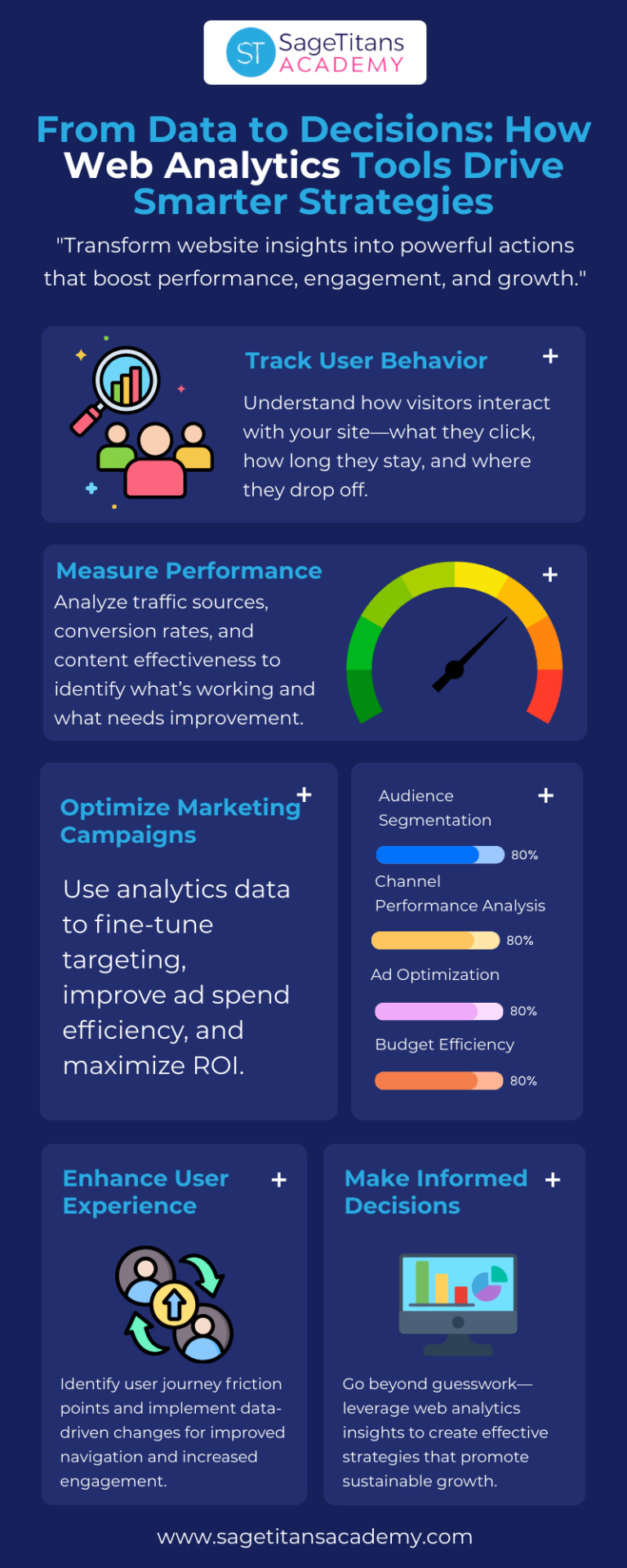#web analytics
Explore tagged Tumblr posts
Text

Maybe my fifth try at studyblr. First time was early COVID era lol. Do interact! Maybe some accountability will help me stay more consistent!! It should also help that it's still like 5th week of lectures, not a crazy time like finals lol
Today's tasks:
Revisit Online Marketing notes
Web Analytics Notes
Write Information Law notes based off slides
Play BOTW
#studyblr#university#information management#information student#library sciences#information sciences#student life#dark academia#uni#university student#university life#online marketing#web analytics#damm i also need to figure out my tags....#study blog#study motivation#studyspo#study aesthetic
35 notes
·
View notes
Text

Enhancing Retargeting and Lookalike Audiences with Facebook CAPI
If you're aiming for more effective retargeting and better lookalike audiences, Facebook's Conversions API (CAPI) is a valuable tool. It allows you to send important customer data from your server directly to Facebook, without relying on browser tracking or cookies.
Why is CAPI important?"
Data Accuracy: Bypass ad blockers and browser restrictions by sending data directly, ensuring no customer actions are missed.
Improved Retargeting: Capture offline actions, app interactions, and other missed data, helping you reach more relevant audiences.
Better Lookalike Audiences: With more reliable data, Facebook can find users who closely resemble your best customers.
CAPI offers a more reliable way to manage your ad campaigns and ensures you can keep up with the changing landscape of data privacy.
2 notes
·
View notes
Text
What is Digital Marketing ?
Digital marketing refers to the use of digital channels, platforms, and technologies to promote products, services, or brands to reach consumers. It encompasses a wide range of online marketing tactics and strategies.

Key components of digital marketing include:
Search Engine Optimization (SEO): Optimizing websites and content to rank higher in search engine results pages (SERPs).
Search Engine Marketing (SEM): Paid advertising to appear in search engine results, often through platforms like Google Ads.
Social Media Marketing: Promoting products or services on social media platforms like Facebook, Instagram, Twitter, etc., to increase brand awareness, engagement, and sales.
Content Marketing: Creating and distributing valuable, relevant content to attract and retain a target audience. This can include blog posts, videos, infographics, and more.
Email Marketing: Sending commercial messages to a group of people via email to promote products or services.
Influencer Marketing: Collaborating with influencers who have a dedicated and engaged following to promote products or services.
Affiliate Marketing: Partnering with other businesses or individuals who promote your products or services in exchange for a commission.
Online PR: Using digital channels to manage a company's reputation and build relationships with the media.
Analytics and Data-driven Marketing: Utilizing data analysis tools to measure marketing efforts and optimize strategies based on insights.

Digital marketing allows businesses to reach a global audience, target specific demographics, track and measure results in real-time, and adjust strategies based on performance data. It has become essential for modern businesses looking to grow their online presence and increase sales in a competitive digital landscape.
#digital marketing#online marketing#social media marketing#web analytics#marketing#business#future of marketing
4 notes
·
View notes
Text

Discover how web analytics tools transform raw data into actionable insights, empowering businesses to make smarter decisions, boost performance, and drive growth with data-driven strategies in the digital age.
0 notes
Text
"Digitale Marketing Strategie en Trends voor 2025"

#Digital advertising#Search Engine Optimization (SEO)#Social Media Marketing#Content Marketing#Email campaigns#Pay-Per-Click (PPC)#Online branding#Affiliate marketing#Influencer marketing#Conversion rate optimization#Mobile marketing#Web analytics#Video marketing#E-commerce marketing#Customer engagement
1 note
·
View note
Text
Adobe Analytics vs Google Analytics: Which One is Right for Your Business?
In the world of digital analytics, businesses rely on powerful tools to track user behavior, measure performance, and optimize marketing strategies. Two of the most widely used platforms are Adobe Analytics vs Google Analytics, each offering unique capabilities to cater to different business needs. While both platforms provide deep insights into website and app performance, they differ significantly in terms of features, pricing, and target users.
Google Analytics, especially the latest version, Google Analytics 4 (GA4), is popular for its ease of use, affordability, and seamless integration with Google's ecosystem, including Google Ads, Search Console, and BigQuery. GA4 adopts an event-based tracking model, enabling businesses to monitor user interactions across devices more effectively. With AI-driven insights, cross-platform tracking, and predictive analytics, GA4 is an excellent choice for small to mid-sized businesses looking for a cost-effective yet robust analytics solution.
On the other hand, Adobe Analytics is an enterprise-level solution designed for organizations that require advanced data analysis and extensive customization. Adobe Analytics provides real-time data processing, sophisticated segmentation, and AI-powered insights, allowing businesses to analyze customer journeys with greater granularity. Its seamless integration with Adobe Experience Cloud makes it an ideal choice for large enterprises focusing on personalization, automation, and deep audience targeting.
A key distinction between Adobe Analytics vs Google Analytics is their approach to data collection and reporting. Google Analytics relies on predefined reports and automated insights, making it easier to implement but somewhat limited in customization. Adobe Analytics, however, offers custom variables, calculated metrics, and complex segmentation, enabling businesses to tailor their reporting to specific needs.
Another crucial factor is pricing. Google Analytics offers a free version with substantial features, while its enterprise edition, Google Analytics 360, comes at a high cost but includes premium support, advanced data capabilities, and increased data limits. In contrast, Adobe Analytics follows a subscription-based model that requires a significant investment, making it more suitable for enterprises with complex analytics requirements.
When comparing Adobe Analytics vs Google Analytics, businesses must consider their objectives, budget, and data complexity needs. Google Analytics is ideal for those looking for an intuitive, AI-powered, and cost-effective analytics tool, while Adobe Analytics is best for organizations requiring deep customization, real-time insights, and advanced data integration. Ultimately, the decision depends on how much control, flexibility, and analytical depth a business needs to drive data-driven decisions.
#adobe analytics#google analytics#AdobeAnalyticsVsGoogleAnalytics#marketing analytics#web analytics#seo analytics
1 note
·
View note
Text
Web Analytics for Non-Digital Stakeholders: How to Tell a Story That Resonates
For digital marketers, web analytics is second nature. We live and breathe data—click-through rates, bounce rates, conversion metrics, and attribution models. But for non-digital stakeholders—executives, brand managers, and even traditional marketers—these numbers often sound like a foreign language. If you’re throwing data at them without context, you’ll lose their attention fast. Continue…
0 notes
Text
Daily Routine of #digitalmarketer
A Day in the Life of a Digital Marketer
Every day in digital marketing brings new challenges and opportunities. From analyzing campaign performance to brainstorming creative ideas, there's never a dull moment.
Today, I:
Analyzed client data in Looker Studio
Optimized a Google Ads campaign
Created a new Facebook Ad strategy
What's a typical day like for you? Share your daily routine!
DigitalMarketing #DayInTheLife #MarketingRoutine
#digitalmarketing#googleads#marketingstrategy#ppc#digital marketing#social media marketing#google analytics#web analytics#google tag manager
0 notes
Text
International Diploma in Digital Marketing: Boost Your Career with Expert Training
#International Diploma in Digital Marketing#Digital Marketing Certification#Digital Marketing Training#Digital Marketing Course#SEO#SEM#Social Media Marketing#Google AdWords#Blogging#Email Marketing#Affiliate Marketing#Content Marketing#Online Marketing#E-Commerce Marketing#Web Analytics#Mobile Marketing#Social Media Optimization#Digital Marketing Jobs#YouTube Marketing#Digital Marketing Strategies#Google AdWords Specialist#Digital Marketing Career#SEO Analyst#Digital Marketing Executive#eCommerce Specialist.
0 notes
Text
Audit your website's conversion rate optimization (CRO) using Hotjar, Microsoft Clarity, or GA4.
**Conversion Rate Optimization (CRO)** is crucial for businesses and websites that want to make the most of their digital efforts. It involves enhancing a website or landing page to increase the percentage of visitors who complete a desired action, such as making a purchase, signing up for a newsletter, or downloading a resource.
Here’s why CRO is so important:
1. **Maximizes ROI from Existing Traffic**
- **Cost Efficiency**: CRO increases the value of your existing traffic by boosting conversions without requiring additional marketing expenses. This means you achieve more results (like sales or leads) from the same amount of traffic, thereby maximizing your return on investment (ROI).
- **Leverage Data**: CRO relies on data and insights, allowing you to make informed decisions that enhance the user experience and lead to better conversion rates without always needing to increase traffic.
2. **Improves User Experience**
- **Enhanced Usability**: A well-optimized website offers an improved user experience by reducing friction points and making it easier for visitors to complete their desired actions. This may include faster load times, easier navigation, better design, and clearer calls-to-action (CTAs).
- **Customer Satisfaction**: A positive user experience often results in greater customer satisfaction, which can increase loyalty, encourage repeat business, and generate word-of-mouth referrals.
3. **Reduces Bounce Rates**
- **Engagement Boost**: CRO efforts, such as refining site design or adjusting content, can encourage visitors to stay longer and explore more, thereby reducing bounce rates and improving engagement.
- **Better Retention**: By addressing pain points and enhancing the user journey, CRO can help retain visitors who might otherwise leave your site without converting.
4. **Drives More Sales and Revenue**
- **Higher Conversion Rate Equals More Revenue**: Increasing the conversion rate leads to more leads, sales, or sign-ups, which directly impacts revenue without needing to increase traffic. This is particularly valuable for e-commerce and SaaS businesses, where small improvements in conversion rates can result in significant financial gains.
- **Tailored Offers**: CRO enables you to customize the customer journey with personalized content, offers, and recommendations, increasing the likelihood of conversion.
5. **Supports Growth and Scalability**
- **Sustained Growth**: By continually optimizing conversion rates, businesses can enjoy steady growth. Because traffic acquisition costs can be high, improving conversion rates is a more scalable approach to growing a business over the long term.
- **Agility in Response to Changes**: CRO helps businesses become more agile, allowing them to quickly respond to changes in user behavior, industry trends, or marketing campaigns.
6. **Improves Competitive Advantage**
- **Staying Ahead of Competitors**: Businesses that prioritize CRO can offer a superior experience compared to their competitors, allowing them to capture market share. A user-friendly, fast, and persuasive website can convert visitors more effectively, giving a significant competitive edge.
- **Differentiation**: Through CRO, you can set your brand apart by providing a more intuitive and satisfying experience that encourages conversions.
7. **Data-Driven Decisions**
- **Informed Optimizations**: CRO relies on A/B testing, heatmaps, user behavior analytics, and other data-driven techniques to ensure that decisions are based on real user data rather than assumptions. This increases the effectiveness and measurability of optimization efforts.
- **Continuous Improvement**: With data at the heart of CRO, businesses can continually enhance and refine their websites, ensuring they evolve alongside changing user preferences and behaviors.
8. **Optimizes Customer Journey**
- **Personalized Experience**: CRO allows businesses to refine the customer journey at every touchpoint, from awareness to decision-making. This results in a more personalized and frictionless experience, increasing the likelihood of converting users at every stage of the funnel.
- **Clear CTAs**: CRO ensures that calls-to-action (CTAs) are clearly visible, compelling, and aligned with the visitor’s needs, which improves conversion rates.
**Conclusion**:
In today’s digital landscape, where competition is fierce and user expectations are high, CRO is not just a luxury but a vital strategy for enhancing business performance. It enables companies to maximize their existing assets, improve user experience, and ultimately drive more revenue—all while spending less on customer acquisition. Businesses can build a more efficient, effective, and scalable marketing approach by optimizing conversion rates.
Click for the website's conversion rate optimization (CRO) Expert...
#marketing#marketingstrategy#digitalmarketing#search engine marketing#googleads#graphic design#google#make money online#make money from home#facebookads#Web analytics#conversation starters#conversation with myself#conversation skills#creative writing
0 notes
Text
#advertising#advertising agency#conversion rate optimization#cro#digital marketing agency#facebook ads#google ads#google advertise#marketing#ppc agency#web analytics#google analytics#GTM#fb pixel & conversion api#server side tracking
1 note
·
View note
Text
From Data to Decisions: How Web Analytics Tools Drive Smarter Strategies
In today's fast-paced world of the internet, going blind on how your website performs is a risk you cannot possibly take. This is where web analytics comes in — providing you with the insights you need to leave guess work behind and go for fact-based decisions.
Whether you own an e-commerce site, a personal or blog site, or a service site, you need to know your people. And no, you don't have to be a data scientist. You just need the right tools—and a plan for using them effectively.

Here's a breakdown of how web analytics tools can flip your online game.
What is Web Analytics?
Web analytics is collecting, analyzing, and reporting your site stats. Web analytics can inform you about what your visitors are doing on your site—what they're clicking on, how much time they're spending on your site, what's interesting to them, and where they're dropping you.
These stats can inform you, for instance:
Which pages receive the most traffic?
Where is your traffic originating?
Is your marketing being converted into sales?
Sounds pretty great, right?
Why Web Analytics Is More Important Than Ever
You can't fix what you can't measure. And with customers now demanding seamless, personalized experiences, monitoring website performance is no longer a nice-to-have—it's a must.
Here's why web analytics significance is increasing day by day:
Increased competition: Every company is online. Differentiation comes from making smart, quick decisions.
More ad investment: If you're advertising on PPC or social media, you need to be aware of what's paying off—and what's not.
Customer expectations: Your customers are demanding personalized content and easy navigation. Data makes it possible.
Web Analytics Advantages You Can No Longer Afford to Ignore
Let's think about the bottom-line advantages that businesses gain when they're making proper use of analytics tools:
1. Smarter Marketing Decisions
Fly no more. Know which campaigns are generating high-quality traffic and which require over hauling.
2. Enhanced User Experience
Analytics pin point user pain points—slow pages, confusing navigation, or irrelevant content—so you can address them immediately.
3. Increased Conversion Rates
With a knowledge of what drives visitors to click, buy, or depart, you can refine your funnel and drive more sales.
4. Increased ROI Tracking
Do you know whether your Facebook campaigns or mailings are worth it? Analytics can reveal the true impact.
5. Data-Driven Content Strategy
Discover what your readers adore to read, watch, or share—and produce more of it.
Basic Web Analytics Tools (and What They Do)
There are dozens of tools out there. Here are some go-tos that cover the gaps:
Google Analytics—The gold standard. Tracks it all, from bounce rates to conversion paths.
Hotjar—Visual insights through heat maps, session recordings, and feedback polls.
SEMrush/Ahrefs— Used for SEO and traffic analysis.
HubSpot— Excellent for monitoring marketing efforts and lead activity.
Crazy Eg—Excellent pick again for UX and scroll analysis.
They all have their strengths. The issue is picking ones that play in favor of your objectives.
Real-Life Example: From Confused to Confident
You own an online clothing store. You see people browsing your website without making a purchase.
Web analytics can assist as follows:
Google Analytics indicates that 60% of visitors are abandoning the checkout page.
A heatmap tool such as Hotjar indicates visitors aren't scrolling down far enough to view the "Buy Now" button.
You relocate the button higher, make the form more straight forward, and voilà—conversion rates increase by 20%.
That's the web analytics magic in action.
Do You Need to Hire a Web Analytics Expert?
Short answer: If math is not your thing or your team is at capacity, then a web analytics specialist can be a lifesaver.
They'll do things like install precise tracking systems.
Streamline complex reports
Reveal opportunities you're currently missing.
Create custom dashboards that are specific to your KPIs.
Whether it's a one-time setup or consulting, the right specialist can take raw numbers and make them clear, action able plans.
Key Metrics You Should Track (Always)
Even if you're new to it all, monitor these key metrics:
Bounce rate—indicates whether visitors are exiting too rapidly.
Pages per session—indicates how engaged your users are.
Average session duration—Monitors time spent on the website
Traffic sources—monitors where your visitors are coming from.
Goal conversions—monitors actions such as purchases, form submissions, or downloads
These fundamentals themselves can teach you a great deal about what's working—and what isn't.
Final Thoughts: Don't Guess, Know
Ultimately, good decisions aren't made randomly. They're the result of insight. And web analytics provides you with that insight, supported by hard data and real behavior.
You're optimizing a landing page, rolling out a campaign, or streamlining your product mix. Analytics tools provide you with clarity and confidence to act.
Stop guessing. Let your data speak.
Ready to Turn Your Data into Strategy?
Ready to realize your website's full potential? Now is the time to join the world of analytics. Stumped? Get in touch with a web analytics expert to build your dashboards, understand your data, and make better decisions—quicker.
Ready to develop a strategy that's rooted in what your audience is really doing? Let's do it today!
0 notes
Text
GA4 to Matomo and How to set up Matomo in Drupal
If you’re a marketer or an SEO specialist, this is a must-read! Find out why we made that BIG shift from Google Analytics 4 to Matomo, an open-source web analytics tool, so you can decide if it is good for you too.

0 notes
Text
What Is B2B Marketing? Definition, Strategies And Trends

Have you watched the movie Syrup? It's a must-see for anyone in marketing! The film, based on a novel, follows Scat, a marketing graduate with a game-changing idea for an energy drink. He navigates the treacherous waters of corporate competition and greed to pitch his idea to major cola companies. #NoSpoilers
Why is this relevant today? Marketing is more than just selling to consumers—it's about pitching to other businesses too, like partnerships and mergers. Scat’s journey shows that even brilliant ideas need the right sales strategy, whether it's in a boardroom or a store aisle.
But, having guidance before you dive into marketing is crucial. With so much competition, understanding the B2B marketing landscape is key before you start.
Keep reading as we delve into the world of B2B Marketing so you can learn how to market your business effectively!
From radio ads to smartphone displays, marketing has evolved significantly. However, it remains a critical aspect of any business, whether targeting individuals or other businesses.
Every business knows that B2B Marketing is essential. It’s about building relationships, nurturing industry connections, and providing solutions to professionals, leading to increased revenue, brand awareness, and customer loyalty.
B2B (business-to-business) refers to marketing strategies designed for corporate buyers. Unlike B2C (business-to-consumer), which targets individuals, B2B focuses on the unique needs of other companies.
So, what exactly is B2B Marketing? Let’s break it down!
What Is B2B Marketing?
B2B Marketing is the process of promoting products or services from one company to another. It helps companies boost brand awareness, educate their audience, generate leads, and retain customers.
Essentially, B2B Marketing includes all strategies a business uses to target and sell to other businesses. Think software companies selling subscriptions to other businesses or manufacturers supplying raw materials to industries. The goal is to attract potential business customers and convert them into loyal clients—just like any marketing activity!
In today’s digital age, capturing and maintaining a prospect’s attention is challenging. Educational content like white papers or value-driven blog posts helps build trust, making B2B Marketing crucial for businesses operating on a business-to-business level.
But what strategies can help you market your business to others? Let’s explore that!
Top 5 Strategies For Impactful B2B Marketing
Like other marketing types, B2B Marketing needs a thoughtfully planned strategy. Beyond traditional methods, businesses must use social media, SEO, off-site SEO, and email marketing campaigns to reach their target audiences. Here are key strategies to enhance your B2B Marketing outcomes:
1. Define Your Brand Positioning Start by understanding the value your products/services bring to customers and how you differentiate from competitors. Defining your brand positioning helps identify your marketing message and potential customers!
2. Understand Your Buyer's Journey The buyer’s journey includes four stages: Awareness, Consideration, Decision, and Retention. Today, this path is non-linear with multiple touchpoints. Understand this complexity to target and engage your audience effectively.
3. Choose Your Marketing Mix And Channels The marketing mix—Product, Price, Place, and Promotion—serves as the foundation for reaching your audience. Choose marketing channels like websites, blogs, social media, newsletters, podcasts, or print magazines to align with your audience’s preferences.
4. Create A Comprehensive Marketing Plan Address how to deliver the right information to the right people through the right channels, using the right assets at the right time. This ensures a structured approach to achieving B2B marketing objectives.
5. Define Measurable KPIs Establish KPIs like website traffic, lead generation, conversion rates, and customer acquisition costs. Monitoring KPIs provides insights to optimize campaigns and enhance B2B Marketing success.
By implementing these strategies, you can create a B2B Marketing approach that reaches your audience, brings engagement, and improves conversion rates.
However, strategies alone aren't enough in marketing. Stay ahead by watching trends. Let’s look at the latest B2B Marketing trends!
Top 5 B2B Marketing Trends You Should Know
B2B Marketing is evolving, and staying ahead is crucial. Here are five trends shaping the B2B landscape:
1. Video Marketing Visual storytelling, through videos, has become a powerful tool in B2B Marketing. Videos help businesses create compelling narratives, from product demonstrations to customer testimonials. A viral video can work wonders for businesses!
2. AI And Automation AI is transforming B2B Marketing, from data analysis to content creation. AI-powered tools streamline tasks like audience segmentation and personalization, freeing up resources for strategic initiatives.
3. Personalization At Scale Today, businesses use data analytics, AI, and automation to deliver highly personalized experiences to each client. Tailoring messages fosters deeper relationships and drives higher conversion rates.
4. Account-Based Marketing (ABM) ABM, although not new, is gaining traction. Instead of generalized strategies, companies focus on creating tailored experiences for high-value accounts, leading to higher conversion rates and ROI.
5. Data-driven Decisions B2B companies increasingly rely on customer data for marketing strategies. Analyzing sales performance, customer feedback, social media engagement, and web analytics helps create effective campaigns that boost conversions.
These trends highlight the importance of technology, personalization, and data analytics in B2B Marketing. Now, let’s wrap up this article!
Final Words
In B2B Marketing, staying ahead requires new strategies and trends. From video marketing to AI integration and data-driven decisions, these strategies help build strong relationships with other businesses. By continuously adapting and innovating, you can drive engagement, boost conversions, and achieve sustainable growth.
So, start applying these strategies and ace B2B Marketing now!
0 notes
Text
Choosing the Best Web Analytic Software
Understanding your website’s performance is crucial for making informed decisions and driving growth. Web analytics software provides the insights you need to track user behavior, measure campaign effectiveness, and optimize your online presence. But with so many tools available, how do you choose the best one for your business? And once you’ve got the data, how often should you report on…
0 notes
Text
Free and Best Web Analytics Reporting Templates
Is organizing data taking a toll on you? Let Two Minute Reports (TMR) Web Analytics Reporting Templates do the job. Our templates collate data from multiple sources to a single dashboard. Enjoy pulling, scheduling, arranging, refreshing, and customizing reports by combining these templates with our TMR tool.
Know more about our templates.
Looker Studio templates
GA4 - Purchase, Conversions Exploration template
GA4 - Revenue Exploration Report template
GA4 - E-commerce Revenue template
Google Analytics 4 Overview template
Google Analytics 4 Overview Report template
Google Analytics vs Google Ads Performance Dashboard template
Google Sheets templates
Google Analytics 4 - Audience Demographic Insights template
GA4 - Acquisition Overview Report template
Gather your website’s data from various platforms and let our templates visualize them in graphs and scorecards for easy comparison and understanding. You can customize data by specific date ranges and track revenues, transactions, conversions, events, channels, users, etc. on a single dashboard. Also, get detailed scorecards for deep analysis of reports.
0 notes